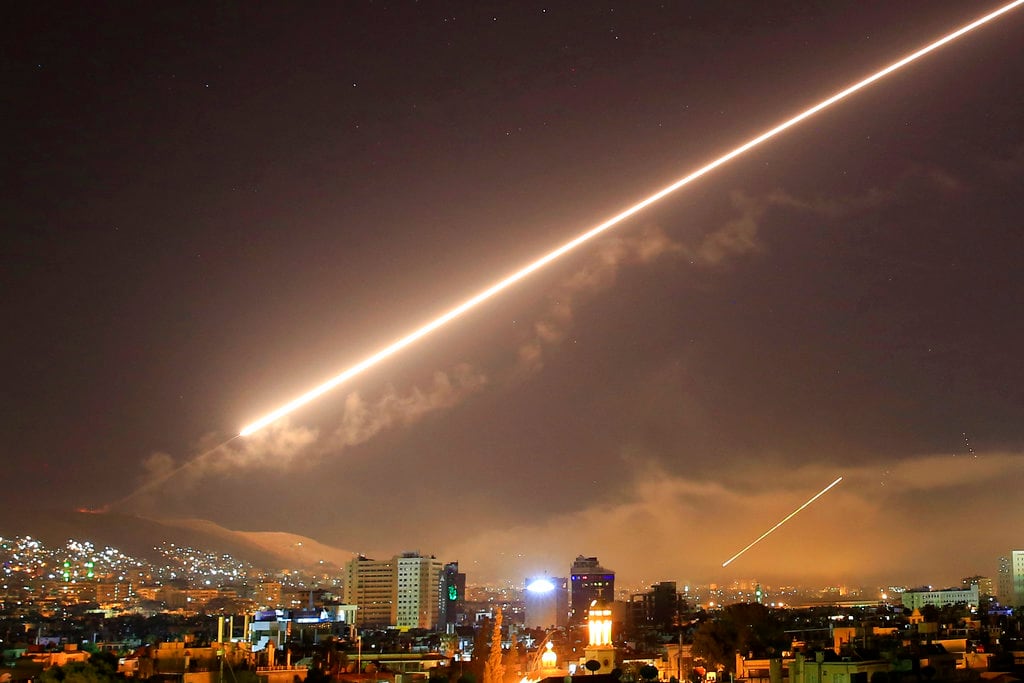WASHINGTON ― When the U.S., France and Britain launched 105 cruise missiles at a trio of Syrian targets April 13, all eyes were on how the vaunted air defense network in Syria would handle the weapon.
But the crown jewel of that system, Russia’s highly regarded S-400, never fired. And while the older Syrian systems did appear to launch some munitions, the Pentagon claims those systems were not used until after the Western weaponry had already impacted their targets.
“Russian air defenses were energized. They were scanning.... They did not choose to engage,” Marine Corps Lt. Gen. Kenneth McKenzie, the director of the Joint Staff, said during an April 19 press event. “I can tell you though that the rest of Syrian air [defense] capability, which is completely Russian-made, Russian-designed, Russian-supported, engaged extensively and comprehensively failed.”
The obvious question that remains unanswered is whether Russia chose not to engage S-400s, or was simply unable to, whether because of American nonkinetic capabilities impacting those system or some other reason. Given the pre-attack notice given by the Pentagon to Russian forces through a deconfliction line, as well as the fact that no strikes were targeted at the air defenses themselves, analysts lean toward the former.
Regardless, the fact the S-400 was not engaged means drawing hard conclusions about Syria’s air defense network from the strikes is difficult, said Tom Karako of the Center for Strategic and International Studies.
“The logic tree suggests we should avoid any hard conclusions, or be a little too triumphal about our ability to penetrate the S-400,” Karako said. “We don’t know what their passive defense measures were. I certainly caution against a hard triumphalist [conclusion] about the Russian [integrated air defense systems].”
Anton Lavrov, an analyst who tracks Russian military thinking and capabilities, said it wouldn’t have made much sense to engage the Russian systems, as the “S-400 in Syria can’t make a difference anyway. There are too few launchers (no more than two battalions) to intercept all or at least a majority of the hundred-missile salvo.”
Because the S-400 wasn’t actually used, it is unlikely the U.S. will be able to turn around and use the strikes as proof that its NATO ally Turkey should not go through with plans to purchase the system, although Pentagon spokeswoman Dana White recently said those conversations are ongoing.

But while the U.S. likely can’t draw many conclusions about the S-400 from this exercise, it is possible Russia learned a lot.
“If I’m Russia, and I know you’re coming, I have a choice ― do I show you my hand and show you my capabilities, or do I keep my powder dry for another day?” Karako asked. “I speculate that perhaps they kept their powder dry.”
Lavrov agrees the attacks on Syria could provide Moscow a wealth of information.
RELATED

“It was the best-ever opportunity for Russia to closely observe a real-life NATO massed cruise missile strike from the first row,” Lavrov said. “And Russian military will learn a lot from this. Tactics, flight patterns, radar signatures of [the stealthy JASSM weapon] and so on.”
One thing both sides can conclude: that the allied weapons ― 66 sea-launched Tomahawks, 19 JASSM air-launched cruise missiles, eight British Storm Shadow air-launched cruise missiles, nine French Scalp air-launched cruise missiles, and two French naval missiles ― all seemed to succeed during their flights.
“The fact you shot 105 missiles and all of them seemed to survive to their targets, that’s frankly a statement of the reliability of our off-the-shelf family of weapons,” Karako said. “A 1 percent failure out of the 100 wouldn’t have been surprising in the least, even without being shot down, so that’s impressive if indeed they all reached their targets.”
Aaron Mehta was deputy editor and senior Pentagon correspondent for Defense News, covering policy, strategy and acquisition at the highest levels of the Defense Department and its international partners.







